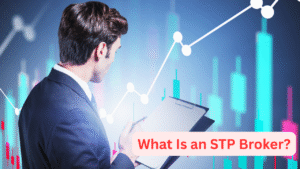 📈 What Is an STP Broker? A Complete Guide for Forex Traders
📈 What Is an STP Broker? A Complete Guide for Forex Traders
If you’re diving into the world of forex trading, you’ve likely come across the term STP broker. But what exactly does it mean, and how does it impact your trading experience? In this guide, we’ll break down what an STP broker is, how it works, and why it might be the right choice for your trading strategy.
🔍 What Is an STP Broker?
STP stands for Straight Through Processing. An STP broker is a type of forex broker that routes your orders directly to external liquidity providers—such as banks, hedge funds, or other financial institutions—without any dealing desk intervention.
This means the broker doesn’t take the opposite side of your trade. Instead, your order is passed through to the market, where it’s filled at the best available price from the broker’s pool of liquidity providers.
Example:
Let’s say you place a buy order for EUR/USD at 1.1050. An STP broker will scan its liquidity providers and execute your trade at the best available price—perhaps 1.1049 or 1.1051—depending on market conditions.
⚙️ How STP Brokers Work
STP brokers operate using a No Dealing Desk (NDD) model. Here’s how the process typically works:
- You place a trade on the broker’s platform.
- The broker’s system automatically routes the order to one or more liquidity providers.
- The trade is executed at the best bid/ask price available.
- The broker may add a small markup to the spread or charge a commission.
Because the process is fully automated, it’s fast, efficient, and transparent.
✅ Benefits of Using an STP Broker
Choosing an STP broker offers several advantages, especially for retail traders looking for fair and efficient execution.
1. No Conflict of Interest
Since STP brokers don’t trade against you, there’s no incentive for them to manipulate prices or delay execution.
2. Access to Real Market Prices
STP brokers aggregate quotes from multiple liquidity providers, offering you competitive and variable spreads that reflect actual market conditions.
3. Faster Execution
With no manual intervention, trades are executed quickly—ideal for scalpers and news traders who rely on speed.
4. Transparent Pricing
You’ll often see variable spreads, but they’re based on real-time market data. Some brokers also offer raw spreads with a fixed commission.
⚖️ STP vs ECN Brokers: What’s the Difference?
While both STP and ECN brokers offer direct market access, there are key differences between the two:
| Feature | STP Broker | ECN Broker |
|---|---|---|
| Order Routing | To liquidity providers | To an electronic communication network (ECN) |
| Spread | Variable, may include markup | Raw spreads, usually with commission |
| Minimum Lot Size | Often flexible | Typically 0.1 lots or more |
| Counterparty | Liquidity providers | Other market participants |
| Suitable For | Most retail traders | Advanced traders, scalpers |
Example:
If you’re a beginner trading micro lots, an STP broker might be more accessible. On the other hand, if you’re an experienced trader using high-frequency strategies, an ECN broker could offer better pricing and execution depth.
🧠 How to Choose a Reliable STP Broker
When selecting an STP broker, consider the following factors:
- ✅ Regulation: Ensure the broker is licensed by a reputable authority (e.g., FCA, ASIC, NFA).
- ✅ Liquidity Providers: More providers usually mean better pricing and execution.
- ✅ Execution Speed: Look for brokers with low latency and minimal slippage.
- ✅ Fee Structure: Understand whether the broker charges a spread markup, commission, or both.
- ✅ Trading Platform: Choose a broker that supports platforms like MetaTrader 4/5 or cTrader for flexibility.
🏁 STP Broker: Final Thoughts
STP brokers offer a transparent, efficient, and trader-friendly environment—especially for those who value fast execution and real market pricing. Whether you’re a beginner or an experienced trader, understanding how STP brokers work can help you make smarter decisions and improve your trading outcomes.
If you’re comparing broker types, remember: the best broker for you depends on your trading style, goals, and experience level.
